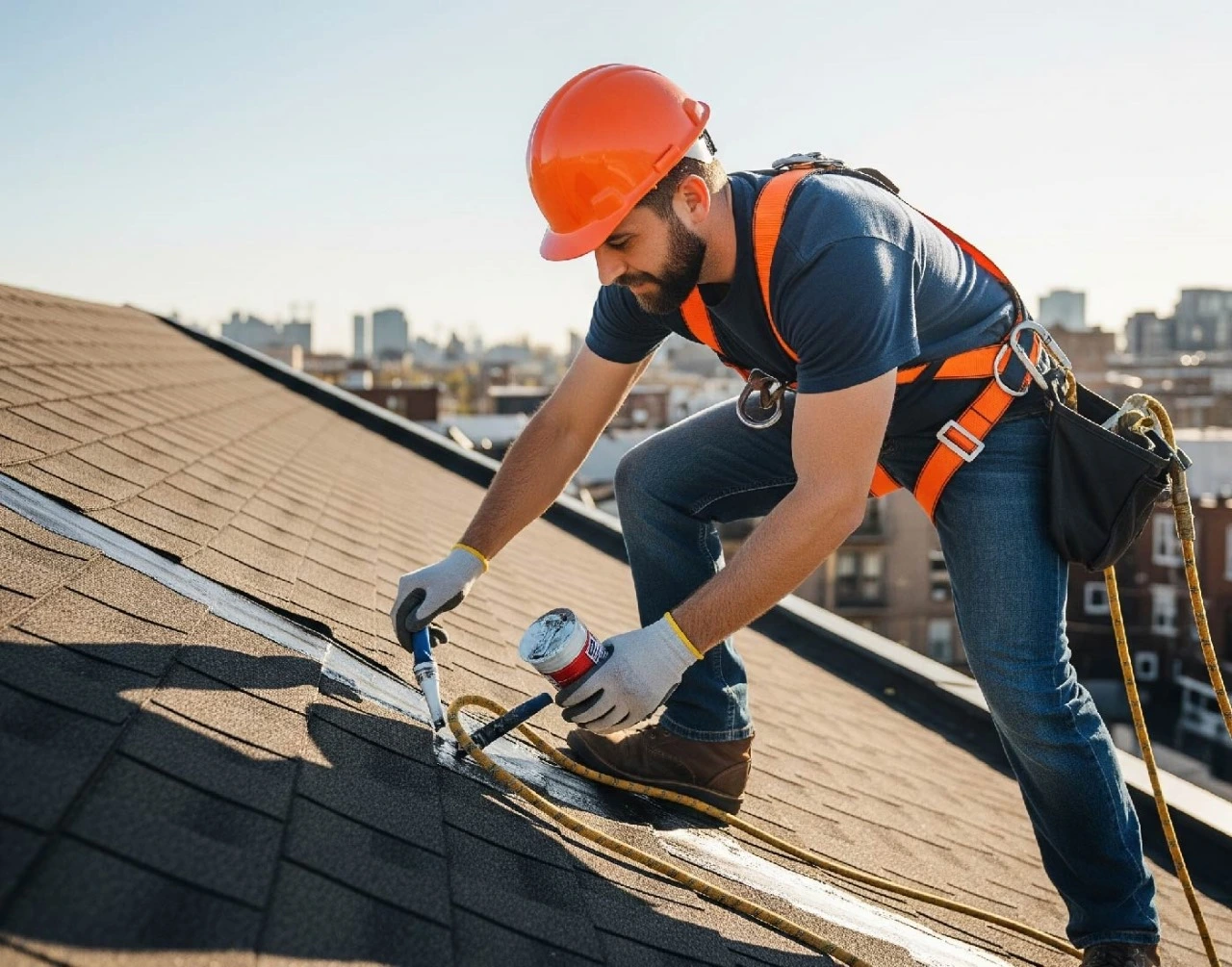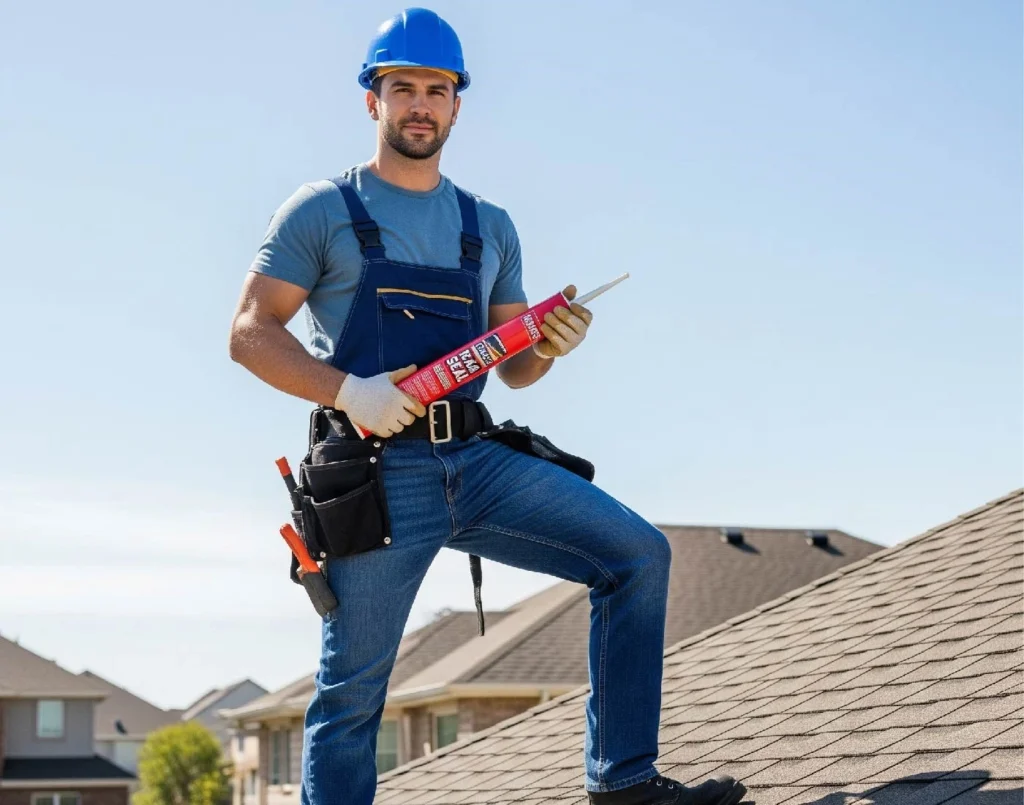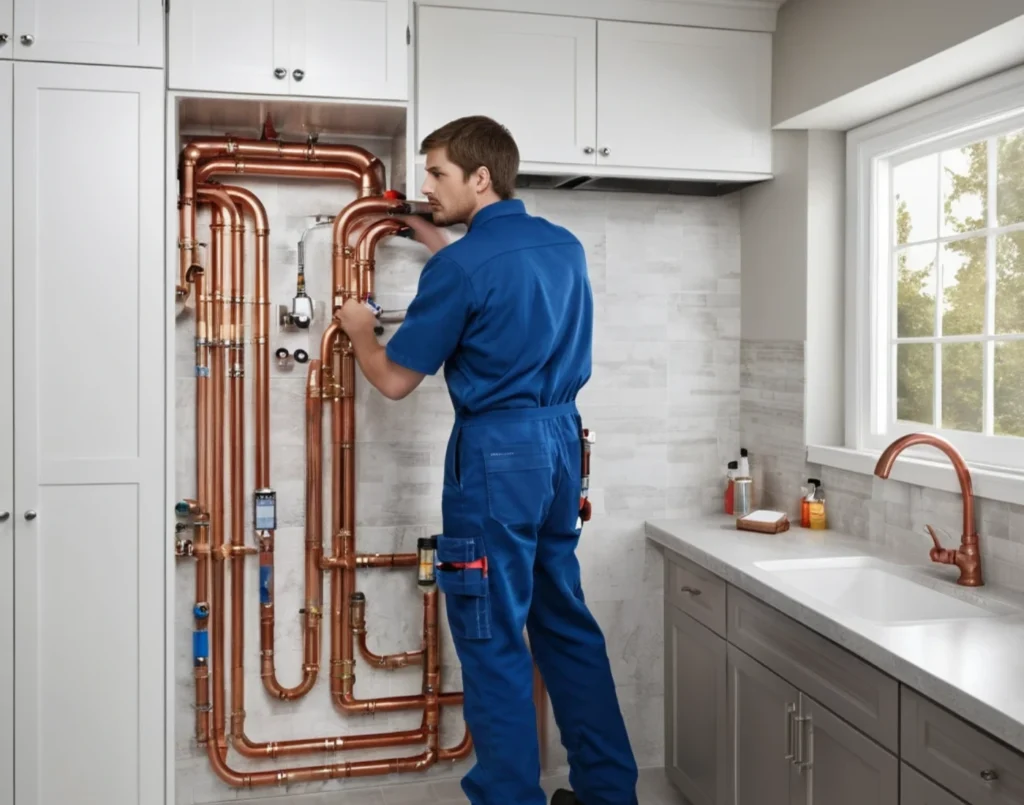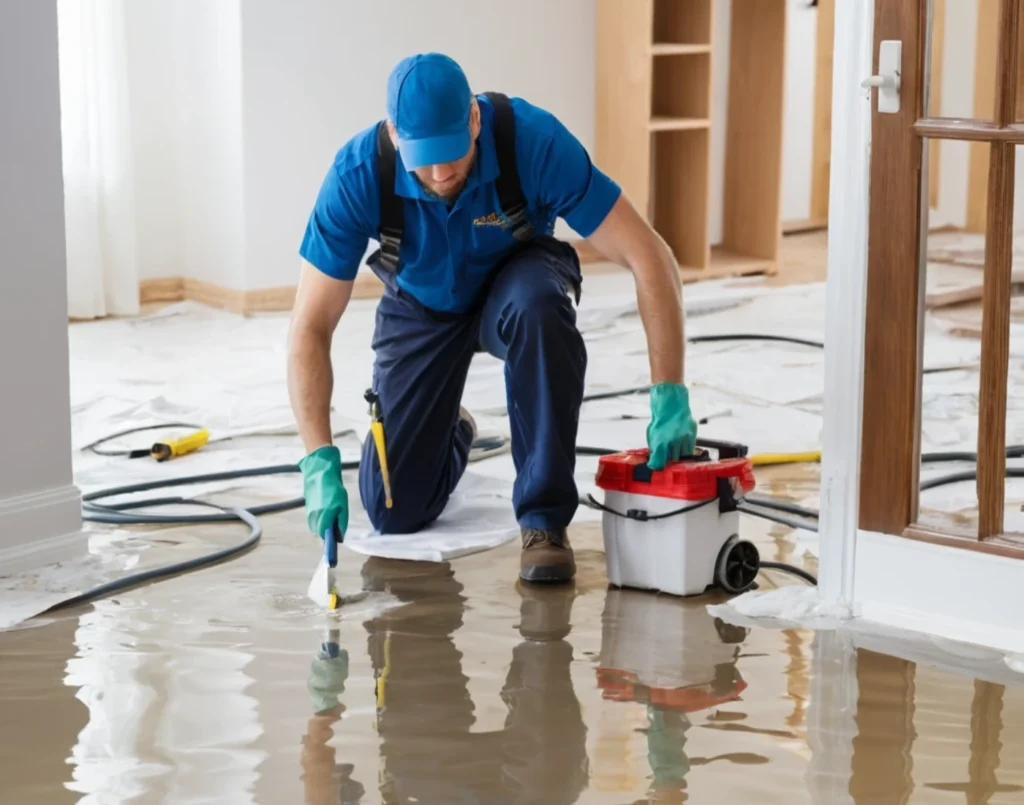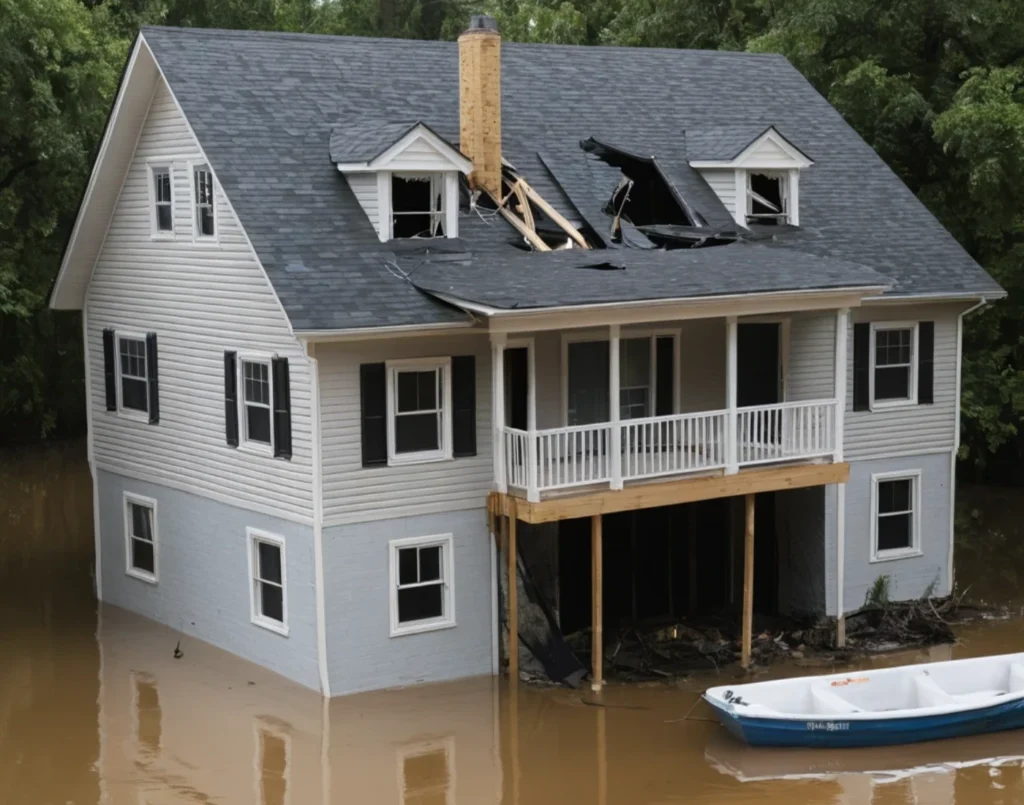If your roof leaks at 2 AM, act fast. Move valuables. Drain any bulges in the ceiling. Then, use roofing tape, sealant, or a tarp to stop water damage. This guide provides quick fixes, warning signs, safety tips, and advice on when to call a pro. Follow it to avoid costly repair bills of $15K or more.
Identify Immediate Steps to Mitigate Roof Leaks
The first 30 minutes after finding a leaking roof can change everything. You might face a small problem or a huge catastrophe. Water leaks can spread fast through your roof. Acting quickly helps protect your belongings and keeps your home safe.
Start by moving furniture, electronics, and valuable items away from the affected area. Put several buckets or containers under the dripping water. Use towels around the base to stop splashing. If water is pooling in your ceiling and causing a bulge, use a screwdriver to poke the center gently. This helps create a controlled drainage point. It’s better than letting it burst unexpectedly.
Recognize Signs of Roof Damage Early
Catching roof issues early can save homeowners about $3,000 in water damage repairs. Most roof leaks start as minor issues that step by step worsen over months or even years.
Check your ceiling for water stains. They look like brown or yellow spots, often with a ring pattern around the edges. Regularly check your attic for damp insulation, dark spots on beams, or musty smells. These signs show moisture buildup. Damaged shingles, loose flashing around chimneys and vents, and granule loss from asphalt shingles can signal issues.
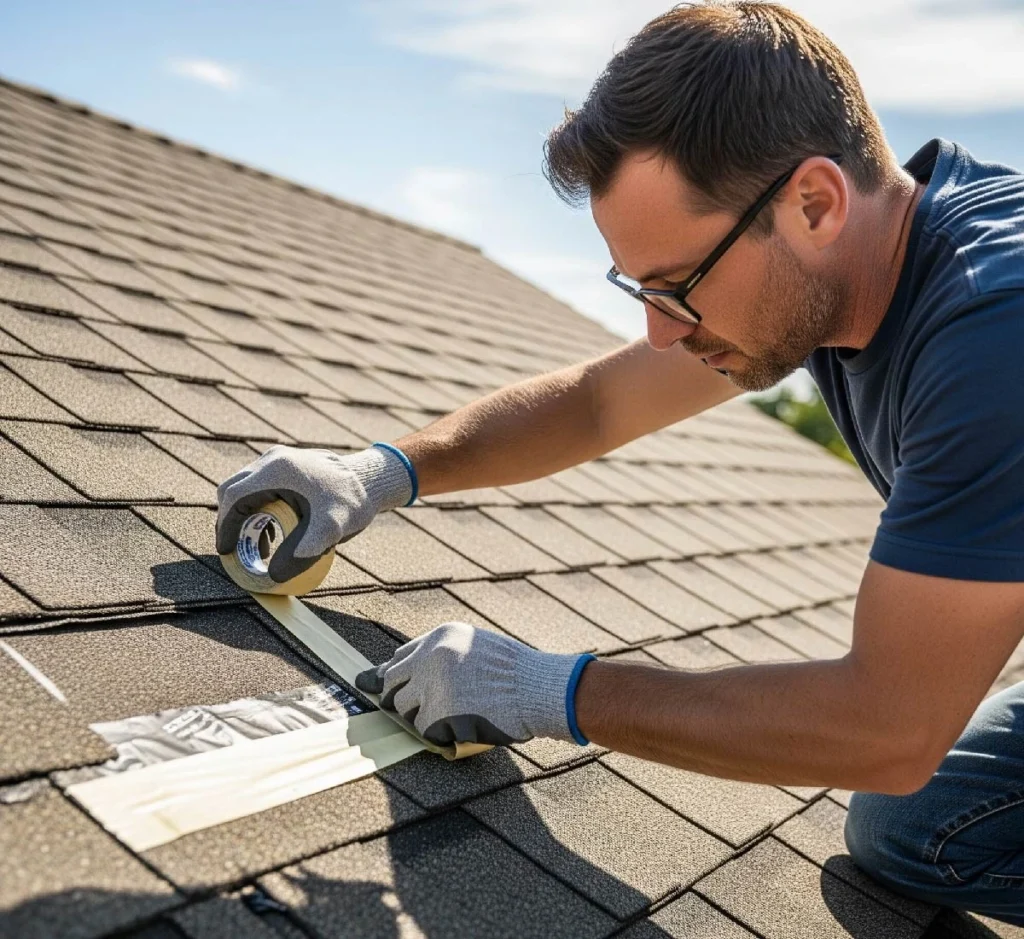
Temporary Fixes for Roof Leaks
Quick fixes give you time to get professional help and stop more water damage. These solutions work for minor leaks but shouldn’t replace proper roof repair.
Using Roofing Tape Effectively
Roofing tape makes a quick, waterproof seal over small cracks and holes in shingles or tiles. Clean the damaged area thoroughly, remove debris, dirt, and loose materials before application. The surface must be completely dry for proper adhesion.
Temporary Roof Repair Using Tape
- Apply the tape with firm pressure, extending it at least 3 inches beyond the damaged area on all sides.
- Use butyl rubber or aluminium-backed tape made for roofing for the best results.
- This temporary fix typically lasts 1 to 3 months, depending on weather conditions.
Applying Roof Sealant for Temporarily Sealing Leaks
Roof sealant is a flexible, waterproof barrier. It expands and contracts with temperature changes. Silicone-based sealants work well for sealing small gaps around roof flashings. Their flexibility and durability make them effective. Roofing cement works best for filling and fixing larger cracks or holes in shingles. It offers a strong solution that holds up against different weather conditions. Both options are short-term fixes to keep water out until permanent repairs are made.
How to Quickly Seal Roof Leaks with Roof Sealant
- Why Use Roof Sealant: Roof sealant forms a flexible, waterproof shield. It can expand and contract with temperature changes. Silicone sealant works best for small gaps around flashing. Roofing cement is better for larger cracks in shingles.
- Prepare the area: Clean the leak area well. Let it dry completely before applying the sealant. Proper preparation ensures that the sealant adheres effectively.
- Apply the Sealant: Use the sealant generously. Shape it into a smooth dome to guide water away from the leak. Use a putty knife to feather the edges, ensuring better water flow and coverage.
- Durable Protection: A good roof sealant lasts 5-10 years if applied right. This keeps your roof flexible and effective, ensuring your peace of mind.
Securing Tarps Over Damaged Areas
A waterproof tarp provides great coverage. It is an ideal short restoration for huge roof damage or when finding a leak is tough. Choose a strong, heavy-duty plastic tarp. Ensure it extends at least 4 feet beyond the damaged area on all sides. This will help protect against more water intrusion.
How to Properly Secure a Tarp
- Use 2×4 lumber strips and roofing nails to secure the tarp, creating a sandwich effect to prevent wind uplift.
- Avoid using nails alone, as they can create new holes that may leak
- Position the tarp so that water runs off toward the gutters.
- Ensure no standing water pools on top of the tarp.
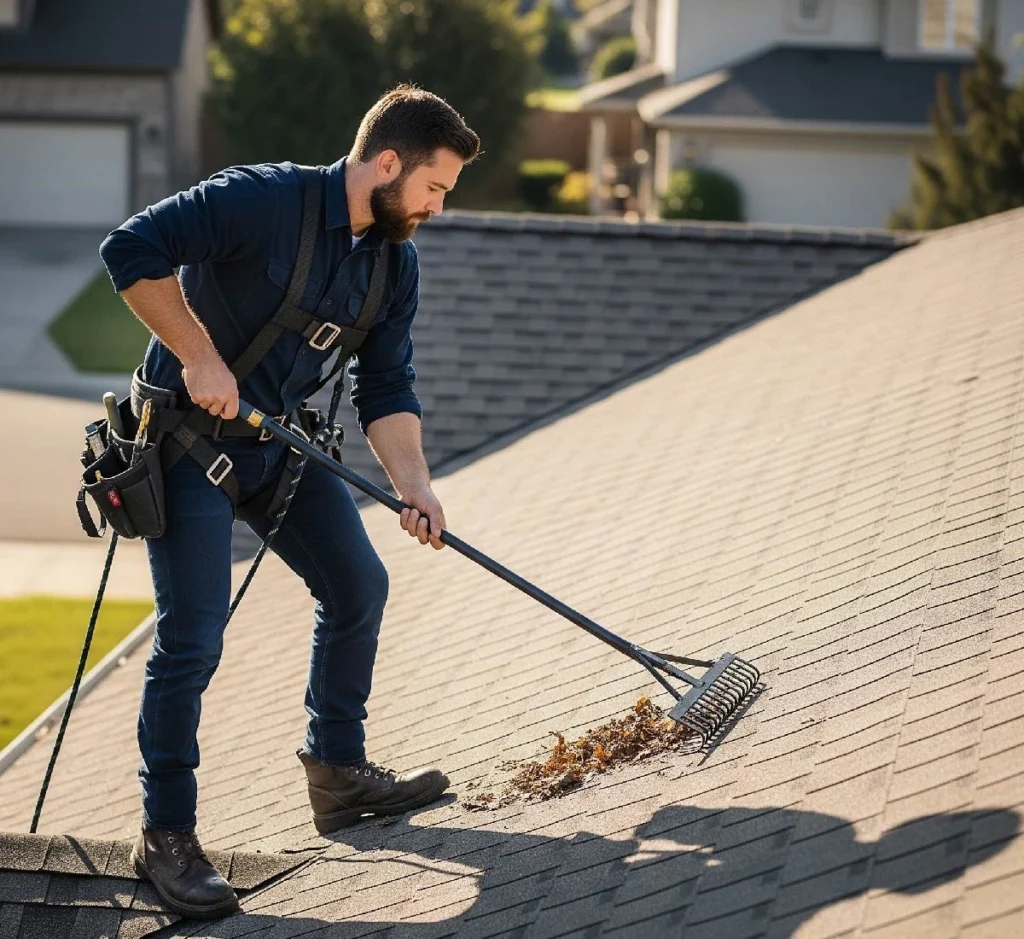
Importance of Regular Roof Maintenance
Preventive roof maintenance saves money compared to emergency repairs for leaks. By investing in regular upkeep, you can greatly enhance the longevity of your roof. Roofing experts usually recommend having inspections twice a year. The best times are in spring and fall. This proactive approach saves money. It also helps spot and fix problems before they become costly.
Regular Maintenance Tips for Your Roof
- Clean gutters and downspouts regularly.
- Cast off debris from roof valleys to prevent water buildup.
- Investigate pipe boots and vent seals for cracks or harm.
- Trim tree branches that hang over shingles to prevent damage during windstorms.
- Check maintenance packages from local roofing companies. They help catch problems early and keep your warranty valid.
According to the National Roofing Contractors Association (NRCA), homeowners should inspect their roofs twice a year, once in spring and once in fall, to catch minor damage before it escalates.
Avoiding Common DIY Repair Pitfalls
Homeowners often mean well, but they can make roof leaks worse. They try to fix problems without the right tools or knowledge. Knowing these mistakes helps you decide whether to repair the roof yourself or call roofing pros.
Ignoring the Source of the Leak
Water travels along the roof structures before leaking inside your home. So, the drip you see is often not directly under the roof damage. Water can move sideways for 10 to 20 feet along rafters, joists, or roof sheathing. It seeks the easiest paths and may end up in your living area.
Always trace leaks back to their source by checking your attic during rainfall. Search for wet spots, water trails, or dampness on wood structural additives. Homeowners often waste time and money sealing the wrong spot. They fix where water appears, not where it enters.
Water can move along before it drips. If you don’t want to cover the whole roof, you might as well pay the $1k you received.
Choosing Inappropriate Repair Materials
Generic caulks and household adhesives don’t hold up well in extreme weather. They also can’t handle roof movement over time. Roofing materials must handle temperatures from -20°F to 160°F and stay flexible.
- Use roofing-specific products.
- For shingle repairs, use roofing cement.
- For temporary seals, use butyl rubber tape.
- Choose flashing materials that match your current roofing system.
Mixing incompatible materials can lead to chemical reactions. These reactions speed up deterioration and may void manufacturers’ warranties.
Overlooking Essential Safety Measures
Roof painting is the most risky activity in production. It causes more worker deaths than any other task. Homeowner accidents also pose serious risks. Wet roofs, steep slopes, and electrical hazards create deadly conditions for inexperienced climbers.
Roof Safety Tips for DIY Repairs
- Never attempt repairs during rain, snow, or high winds.
- Use proper roof safety equipment, including non-slip shoes, safety harnesses, and stable ladders.
- Work with a partner who can call for help if needed.
- Many insurance policies don’t cover DIY roofing injuries. This can result in high medical bills.
When to Consult Professional Roofers
Some roof leaks need a professional roofing contractor from the start. Roofing systems can be complex. Hidden structural issues and insurance claims often require expert help for proper fixes. Trying to solve these issues without the right knowledge can cause costly mistakes. These errors could be avoided with the help of experts.
Call professionals right away if you have leaks. Leaks can happen in several places: metal flashing, around chimneys, and step flashing near dormers or skylights. Flat roofs require specialised knowledge and materials that most homeowners lack. Any leak showing damage, rotted roof decking, or weak joints needs a pro to check before repairs begin.
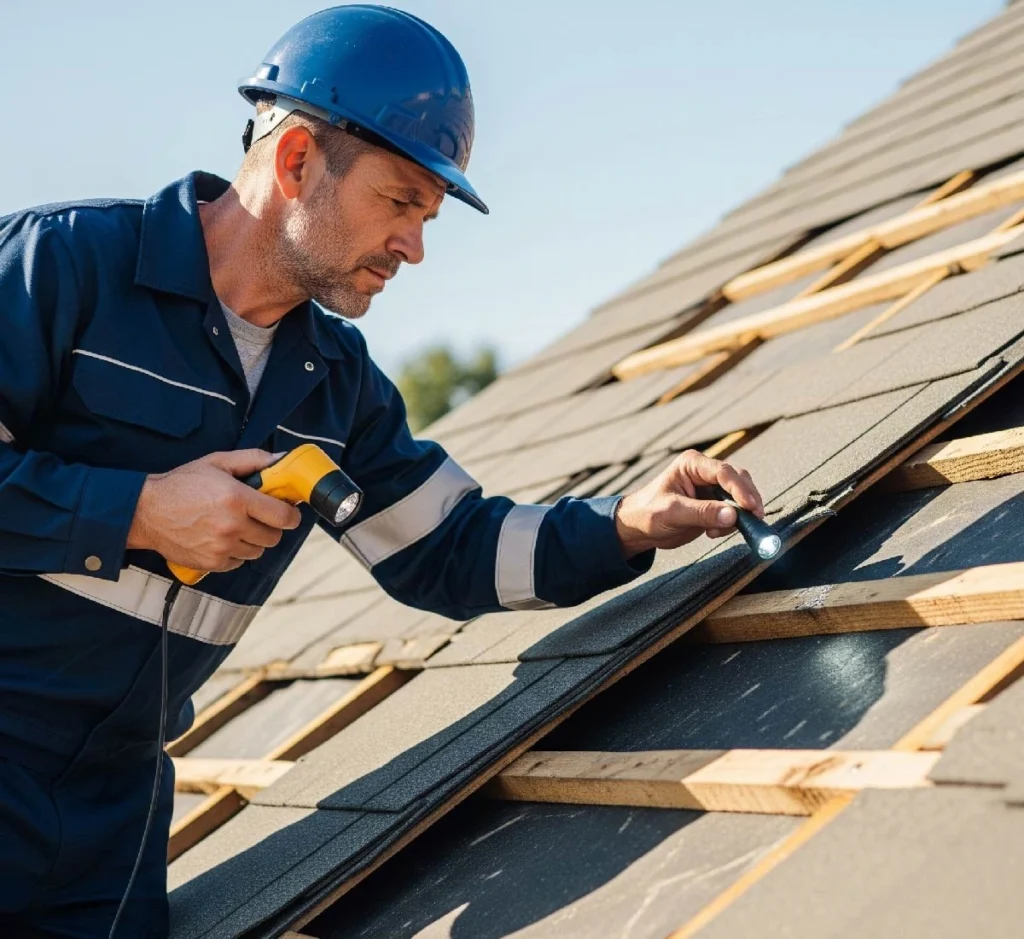
Long-term Solutions for Persistent Leaks
Recurring roof leaks indicate underlying problems that temporary fixes can’t resolve. Addressing root causes prevents ongoing water damage and reduces long-term repair costs.
Addressing Persistent Roof Leaks
- Causes of Persistent Leaks
- Installation errors
- Inadequate ventilation
- Roof materials past their useful life
Professional Diagnosis
- Identifies the need for targeted repairs
- Suggests roof restoration or complete replacement
Benefits of Using a Reputable Roofing Company
- Provides detailed assessments
- Offers artistry warranties
- Protects your long-term investment
Potential Consequences of Untreated Leaks
Delaying roof leak repairs leads to more issues. These problems can quickly increase repair costs. Understanding these consequences helps homeowners prioritise repairs appropriately.
Structural Damage Risks
Water infiltration weakens your house’s structural components over the years. Wooden roofs, wall studs, and floor joists soak up moisture. They can start rotting just months after exposure. Metal fasteners corrode, compromising connections throughout your roof structure.
Severe structural damage needs major repairs, costing between $15,000 and $50,000. In contrast, fixing leaks early usually costs just $500 to $2,000. Coverage corporations regularly deny claims for slow damage. Homeowners could have prevented this with timely maintenance.
Mould Growth Concerns
Mould spores thrive in damp areas caused by roof leaks. They can begin to develop within 24 to 48 hours after water exposure starts. Toxic moulds, like black mould, can harm health. They especially affect children and people with breathing problems.
Getting rid of mould in your home requires special tools and methods. The cost usually falls between $3,000 and $10,000, depending on how bad the mould problem is. Sometimes, you may need to leave your home while professionals remove mould. This adds extra hotel stays and storage costs for your things to the total repair expenses.
Interior Damage Impacts
Water harm destroys your private home’s insulation, drywall, flooring, and personal assets. Ceiling repairs, painting, carpeting, and replacing furniture can add thousands to repair bills. This is above the cost of fixing the roof.
Electronics damaged by water infiltration rarely qualify for repair, requiring complete replacement. Family photos, documents, and priceless items can suffer permanent damage. No amount of money can fix them.
Local Emergency Roof Repairs
If you’re dealing with a roof leak and live in [City/State], contact certified roofers nearby. Local pros understand regional weather and material requirements. Search “emergency roof leak repair near me” to find 24/7 help.
FAQ’s
1. What is the best way to repair roof leaks?
To fix a roof leak, locate the supply first. Then, roofing materials are used for the repair. For minor leaks, apply roofing cement, silicone sealant, or patch tape to seal the damaged area. Call a pro for leaks or problems near flashing, chimneys, or valleys. They’ll make sure the repair lasts and keeps out the weather.
2. What is the best solution for roof leakage?
The satisfactory answer for roof leakage depends on the severity. Temporary fixes like roof sealant or waterproof tarps can stop leaks in the short term. The best long-term solution is a professional inspection. You can choose targeted repairs, restore your roof, or completely replace it if your roofing material fails.
3. Am I able to spray Flex Seal on a leaking roof?
Flex Seal can temporarily stop minor roof leaks by creating a waterproof barrier. However, it’s not a permanent solution and may crack or peel under extreme weather. Clean and dry the area first. Then, plan for a professional repair to ensure lasting protection.
4. How do you fix a leaking roof without replacing it?
You can fix a leaking roof without a full replacement. Seal the damaged area with roofing cement, patch tape, or silicone sealant. Find where water is coming in. It’s often around shingles, vents, or flashing. Then, use the right material to seal it. For big leaks, think about partial roof repair or re-shingling. A full replacement might not be necessary.
5. What tools and materials do I need to repair a roof leak?
To fix a roof leak, you need these items:
- Roofing cement
- Sealant
- Patch tape (like butyl rubber)
- A putty knife
- Roofing nails
- A hammer
- A tarp
- Safety gear (non-slip shoes, gloves, harness)
- A strong ladder
For larger or steep-slope roofs, professional tools and expertise are highly recommended.
Read Also: Water Damage Roof Repair: Prevent Costly Issues Now

